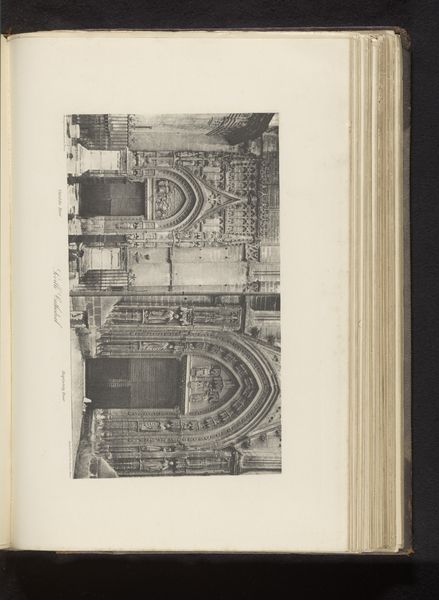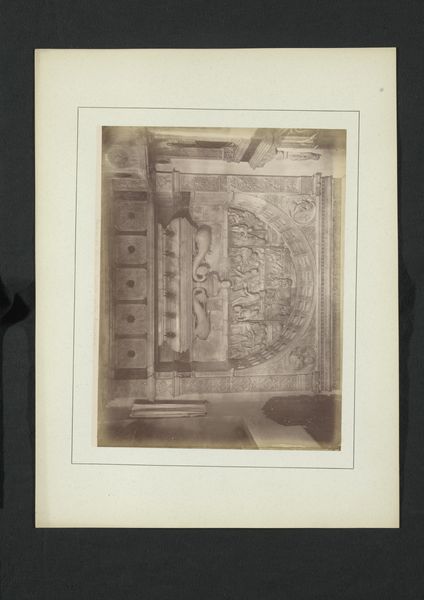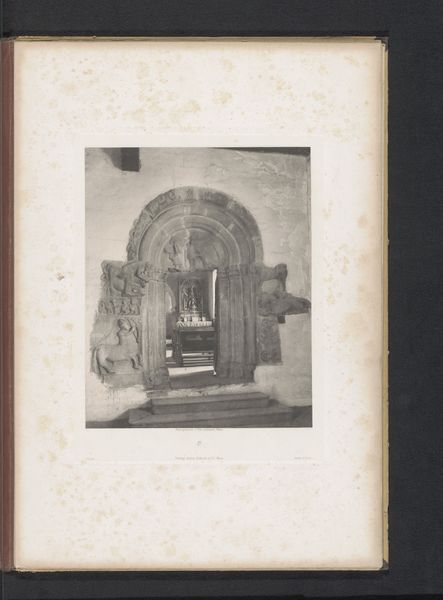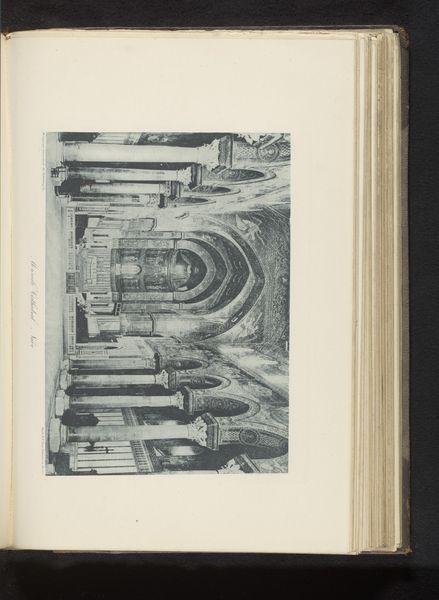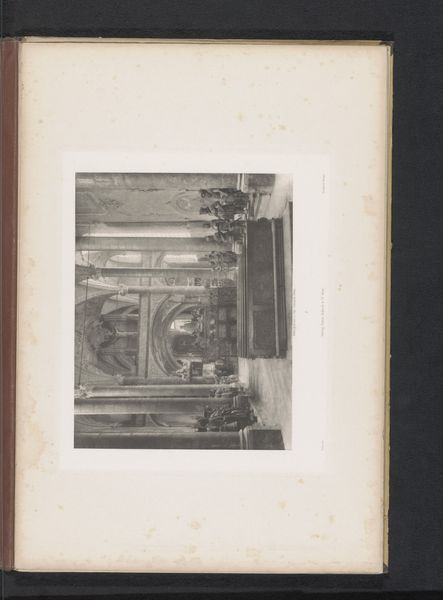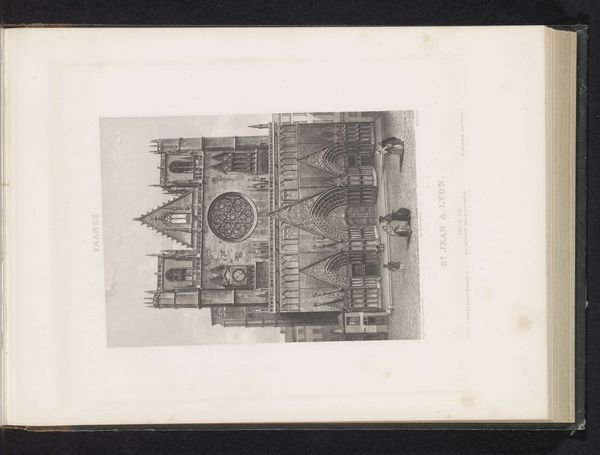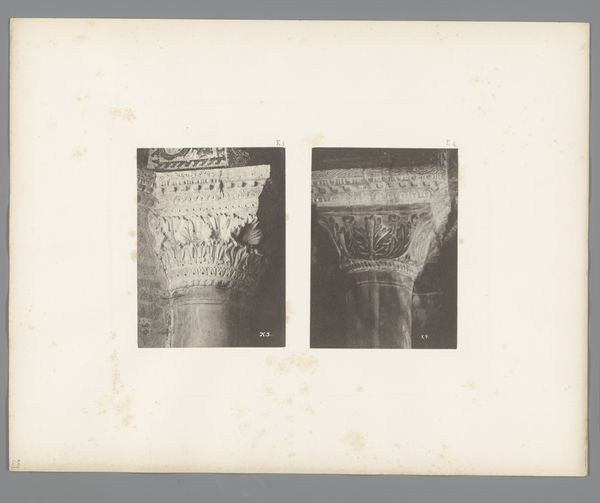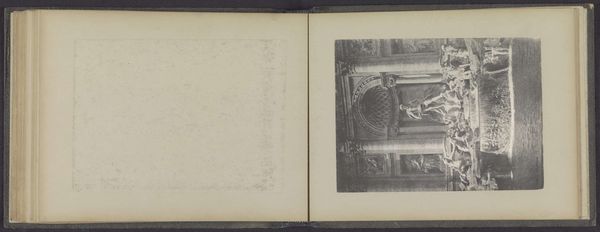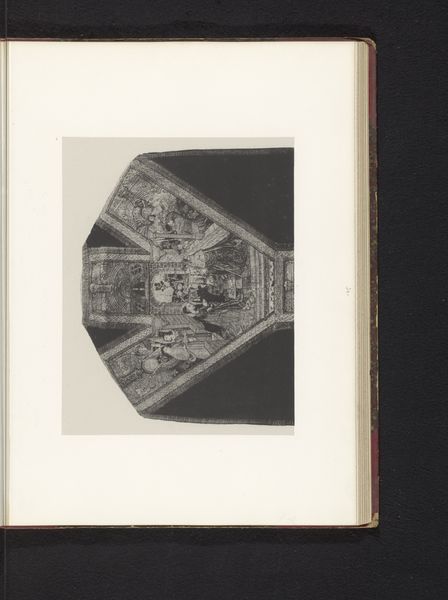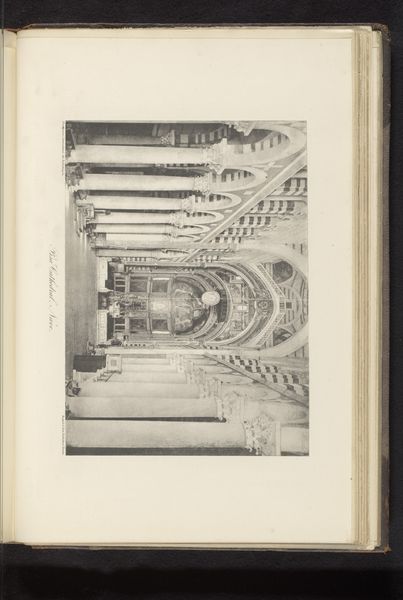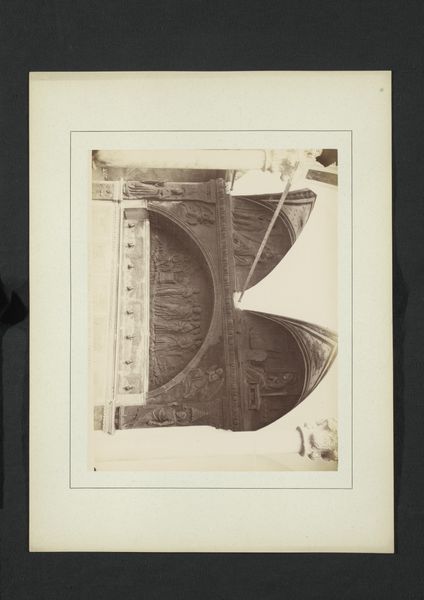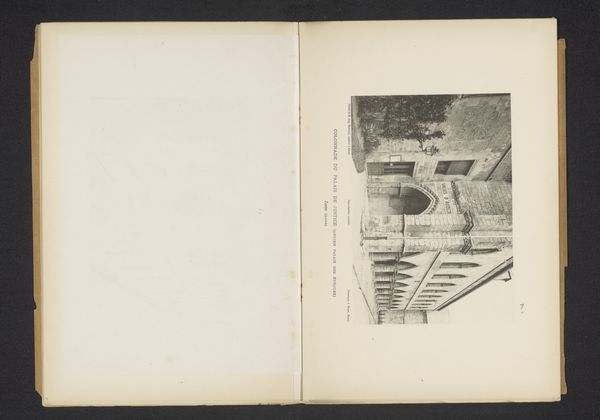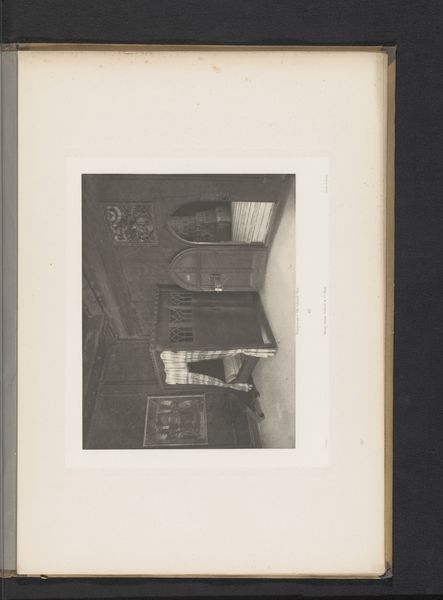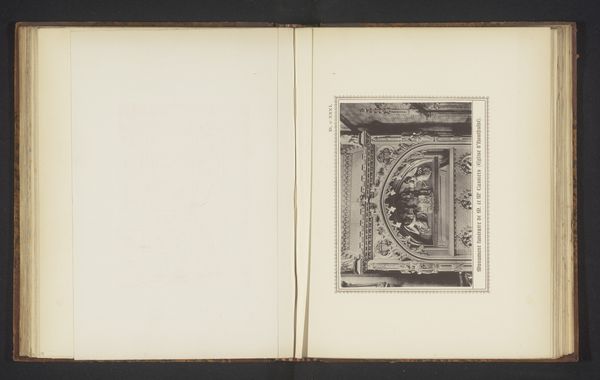
#
aged paper
#
homemade paper
#
paperlike
#
sketch book
#
paper texture
#
personal sketchbook
#
hand-drawn typeface
#
thick font
#
paper medium
#
historical font
Dimensions: height 211 mm, width 268 mm
Copyright: Rijks Museum: Open Domain
Curator: At first glance, I feel a quiet reverence. The textures seem aged, softened by time, as if history itself is whispering through the stone. Editor: Indeed. What we see here is a page from a sketchbook containing a hand-drawn representation of the "Portaal van de kathedraal van Palermo," or portal of the Palermo Cathedral, created before 1886. Note the paper texture and handwritten script in the margins, indicating its probable personal and informal nature. Curator: Immediately I’m drawn to the iconography, which signifies so much more than mere decoration. Arches have symbolized transition and passage throughout the centuries. Religious icons flanking either side emphasize the divine's gateway from earthly matters. What readings are possible? Editor: Well, if we approach this from a contemporary perspective, particularly using postcolonial and critical race theory, one can't help but consider Sicily's complex history of conquest and cultural exchange. What did such powerful religious symbols represent to those historically excluded from the cathedral’s promise of divine acceptance, or for those of marginalized communities during this sketch? Curator: Yes, layered beneath that solemn architectural façade lies a deeper current of meanings, reflecting Sicilian visual traditions while potentially appropriating symbols with complex layers of social and cultural meaning. Consider how norms were transmitted via such displays. Editor: Exactly! Consider how many cultural messages were communicated. It serves as an incredible example of cultural memory embedded in our imagery. And note that contrast created: between the detailed etching and the spontaneity implied by its sketchbook format Curator: This forces us to ask not just *what* it depicts, but *who* could afford access and dictate those readings… Editor: Precisely! These dialogues between art and sociocultural consciousness are so essential, adding shades of historical realities onto images often taken for granted! What a wealth of reflection from just one sketch! Curator: Absolutely. Studying images across temporal expanses like this deepens the narratives. The layered dialogues they allow can alter and refine how we connect history and art with present-day conversations around cultural representation and identity politics.
Comments
No comments
Be the first to comment and join the conversation on the ultimate creative platform.
